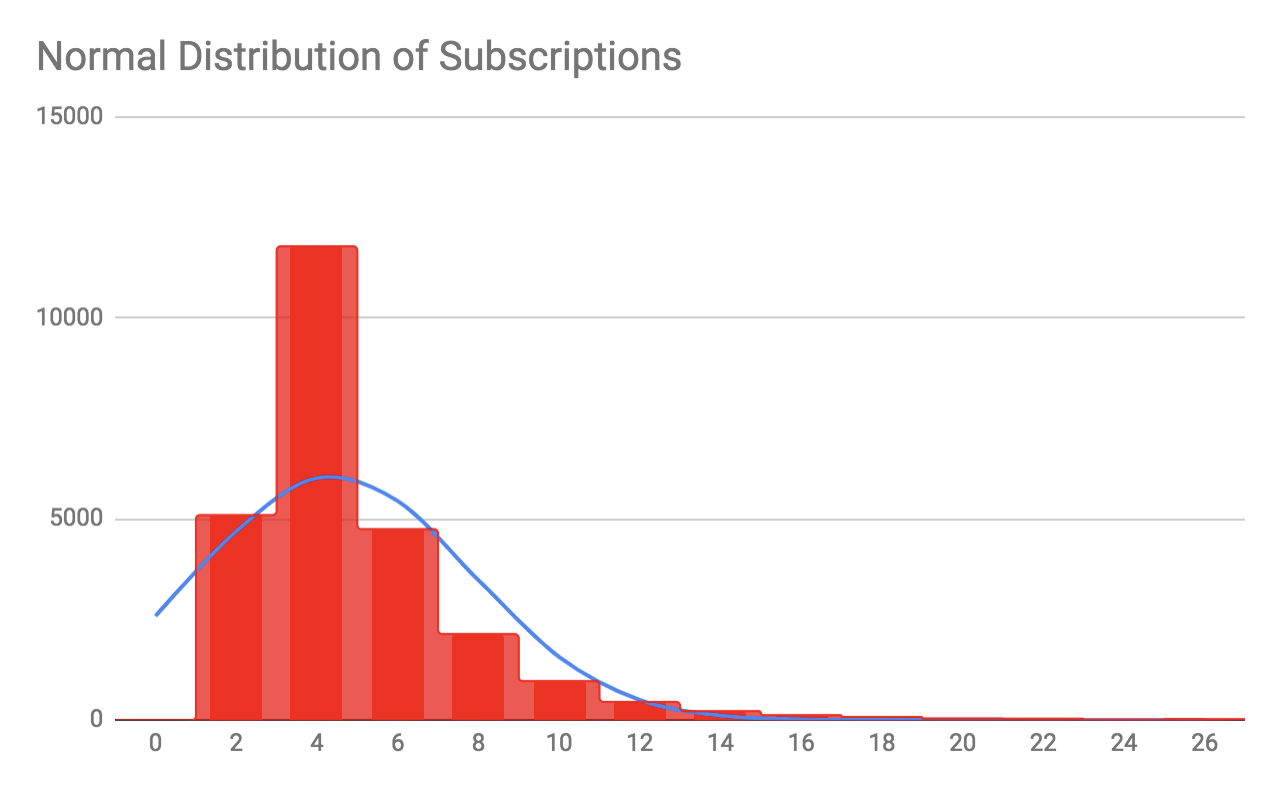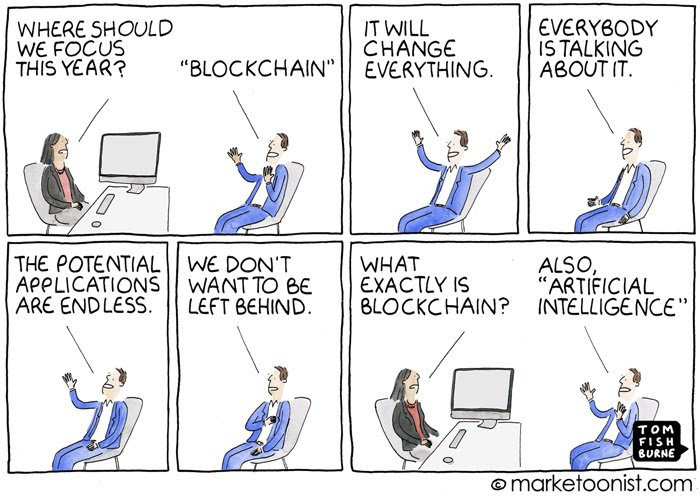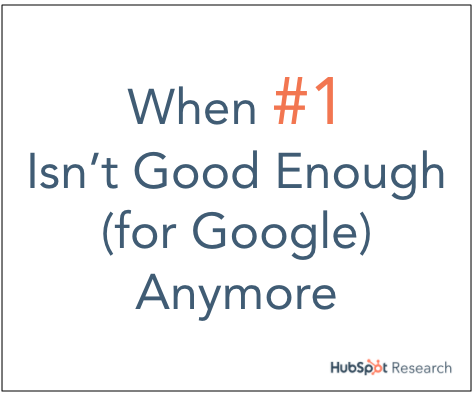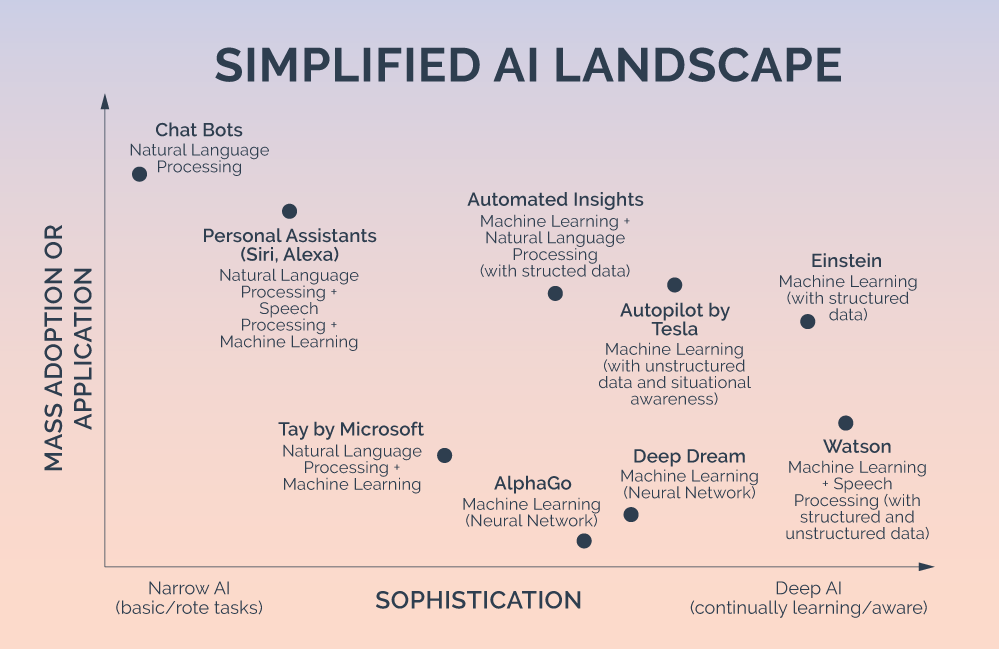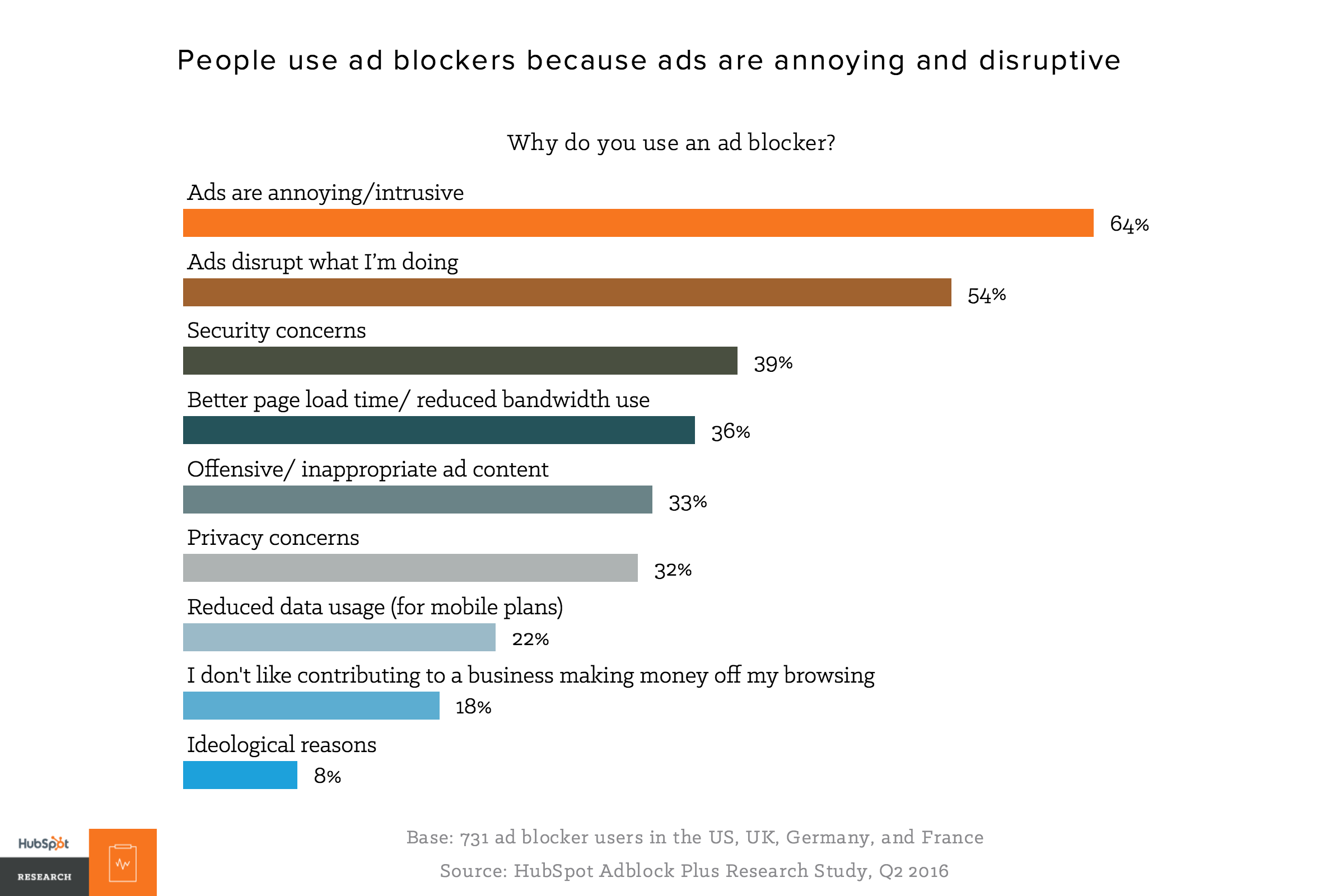People have long faced nuisances from marketers and advertisers in their lives: telemarketing calls during dinner, purposely loud and obnoxious commercials interrupting TV shows, or piles of direct mail that usually goes straight into the recycling bin. These types of advertisements, which push products and services onto unwilling consumers, have been joined by a new breed of ads that exist solely in the digital marketplace. Think pop-up ads, distracting banner ads, or the dreaded auto-playing video ad.
At HubSpot, we wondered: what type of customer experience do these online ads create? How do they affect a brand’s reputation? And most importantly, how should marketers in Asia Pacific engage consumers with ads in the future?
Given today’s rapidly changing advertising landscape, the ramifications for marketers are clear: as more consumers ignore or even remove themselves from receiving interruptive ads, advertising needs to evolve. Ads will never disappear. But as consumer behavior changes, marketers need to get smart about their digital ad spend. In the near future, marketers who want to connect with potential customers must supplement their target’s online experience, not interrupt it. ![]()
Table of Contents (7 min read)
This report has been adapted with Asia Pacific specific data. The master global report can be found here.
- Ads Are Everywhere, But it Doesn’t Mean People Like Them
- Consumers Are Actively Avoiding Ads
- Conclusion: Is This The Age of Native Advertising?
Ads are everywhere, but it doesn’t mean people like them
Ads are everywhere. Regardless of format, saturation of ads in the consumer experience is clear in our research (see Figure 1)
Figure 1
That’s great for the marketers behind the ads, right? Not exactly.
Yes, ads are getting a lot of eyeballs, but what type of experience do they generate? Let’s break down the experience ratings for each type of ad.
Figure 2
Consumers really hate telemarketing calls, pop-up ads and auto-playing video ads. If you’ve encountered these in the past, it hardly needs to be explained why people react so negatively to them.
Let’s focus on the best-rated types of ads instead (see the chart below). No ads received a positive response, but when we looked at the neutral responses a common theme emerged: ads with neutral experience scores are either expected or do not disrupt a consumer’s browsing experience.
Email newsletters and email ads are unique forms of advertising that consumers have opted into. They’re promotional assets that a consumer can choose to read or ignore. They include the option to unsubscribe from mailings completely. The control is all in the consumer’s hands.
Figure 3
The next set of ‘neutral’ ads is sponsored content that appear in LinkedIn, Facebook, and Twitter, which fall into the broader category of native advertising.Defining native advertising is difficult, but native ads typically match the look and feel of the platform they appear in and provide *useful* content rather than a typical CTA to purchase something. Considering the behaviour that the previously mentioned social networks encourage -- fast consumption of information through a scroll down gesture -- it’s easy to see how a sponsored ad appearing natively in-platform creates an unobtrusive experience. In fact, viewers often don’t notice the difference between a well-crafted native ad and a standard post or listing in the platform.
There is also less risk of damaging a brand’s reputation if marketers choose to go native (see Figure 4). Opting for telemarketing calls, pop-up ads, or autoplaying ads can do real damage to your brand’s reputation, with 75% of respondents indicating they would have a lower opinion of a brand if they subjected the consumer to a telemarketing call. Consider: for every successful conversion you may get via a pop-up ad, how many potential customers did you put off?
Consumers are actively avoiding ads
Inbound marketers -- that is, marketers whose content-led strategies are designed to help and add value to their audience, rather than interrupt them -- have long known that power has shifted to consumers. The same is becoming true of ads as well. Consumers today are taking charge of their experience and avoiding interruptive advertising. They are unsubscribing from emails, skipping commercials, ignoring phone calls and direct mail, closing webpages, and, most troubling to the ad industry, blocking online ads.
Email unsubscribes
In our study, 96% of global consumers have unsubscribed from receiving emails. The top reason was the sheer volume of emails they were receiving from a company. In Asia Pacific, the total unsubscribe rate is slightly lower at 91%. As for reasons for unsubscribing, a worrying 46% in Asia Pacific also indicated they didn’t sign up for emails to begin with (see Figure 5). With anti-spam and privacy laws long in effect, it’s more likely that the respondents 1) forgot that they signed up for emails or 2) didn’t realise they were going to receive emails when they submitted.
Figure 5
Marketers have long used email sign up as a key metric for marketing success. But if email recipients, who don’t even remember signing up for emails to being with, just end up becoming inactive or unsubscribing, is that metric really meaningful? Email may produce a neutral experience but that doesn’t mean marketers should send irrelevant emails to inactive email addresses. Most consumers have reached a saturation point on the emails they’re willing to open, let alone receive.
Email marketing and automation should evolve so that marketers focus on getting targeted content to engaged leads and delighting customers, not on the sheer size of their email database. To drive real engagement, marketers can send contextual emails to their database using more granular segmentation, personalise their messages, and of course, make sure the content of the email is stellar enough to warrant an open or a click.
Pop up and autoplaying ads = goodbye visitor
Over 80% of Asia Pacific consumers have closed a browser or exited a website because of an auto-playing ad or a pop-up (see Figure 6). ![]() So not only does the marketer’s paid advertisement not connect with a consumer, the web host of the advertisement also loses a visitor. Coupled with the generally negative reaction consumers have for these types of interruptive online ads, it really seems like a lose-lose option to pursue.
So not only does the marketer’s paid advertisement not connect with a consumer, the web host of the advertisement also loses a visitor. Coupled with the generally negative reaction consumers have for these types of interruptive online ads, it really seems like a lose-lose option to pursue.
Figure 6
The rise of adblockers: the display advertiser’s nightmare
Ad blockers are applications (like plugins or browser extensions) that remove or alter advertising content on a webpage -- when a user loads a web page, the ad blocker application compares the scripts that load against its own database of scripts that it is designed to block (see Figure 7 for a simplified diagram). If there’s a match, the ad on the page gets blocked. The majority of ad blockers target banner ads and pop-up ads, and many block search and native ads, including the ones on social channels, too. Some completely remove all advertising from a page while others focus on ads that compromise privacy by blocking tracking codes.
Figure 7
Over half of our global respondents have installed an ad blocker or plan to install one within 6 months (see Figure 8). Generationally, adoption is highest amongst millennials. Adblocker Plus, the most popular ad blocking app, has reached 300 million downloads worldwide, causing traditional advertisers to reach near-hysterical levels of panic. The reaction is understandable, given that ad blocking has cost publishers nearly $22 billion in 2015 alone. ![]()
People now spend 51% of their time accessing the internet via mobile devices. Ad block tools have been available on Android and IOS mobile devices, but this year, Apple announced that IOS 9 will allow ads to be blocked in its Safari browser and within apps. ![]() The implications are huge: 20% of all web browsing happens in Safari. People spend 85% of their mobile time in apps. Apple’s IOS announcement means advertisers' access to both Safari and apps will be cut.
The implications are huge: 20% of all web browsing happens in Safari. People spend 85% of their mobile time in apps. Apple’s IOS announcement means advertisers' access to both Safari and apps will be cut.
Display ads have long been the bread and butter of most online advertisers. Now that millions of consumers are blocking them, marketers who still want to use paid advertising online must be smarter about the content they create and the channels they use to distribute it.
Figure 9: APAC Adblocker Adoption Plans 
Is this the age of native advertising?
Platforms are aggressively pushing out content. Consumers are sick of interruptive ads. What does this mean for the future of advertising? HubSpot found that there is a clear preference for native advertising amongst digital consumers while ads that interrupt (pop-ups, auto-playing videos, etc.) are the lowest rated. To make your ads less interruptive, use unobtrusive formats like native ads. While traditional advertising channels will never disappear, marketers must begin factoring in native into their overall marketing strategy.
Native ads can be sponsored tweets on Twitter, promoted listings on Amazon, or ‘advertorial’ content published on sites like BuzzFeed. The content can be written by the publisher’s staff or by the sponsor company (see Figure 10 for a breakdown of all the types of native).
Figure 10
For years, many industry analysts have been heralding the rise of native advertising. The shift to native appears to be accelerating as platforms have amped-up their focus on advertising in-platform. Besides the social networks mentioned previously, publishers like BuzzFeed, Snapchat, and even Netflix have placed bets on ads within their platform this year. Facebook, beyond their business line of targeted advertising, even announced intentions to co-opt traditional news media. As various platforms demand the ability to host an advertiser’s content natively rather than linking to a separate web property, there are huge ramifications on how marketers do their work.
Marketers interested in targeting ads to specific consumers in an unobtrusive fashion should seriously consider spending some time on native. ![]() There are downsides: in exchange for delivering a better ad experience, hosting content on a third party platform -- usually in the ‘advertorial’ use case -- means a marketer will have spotty access to metrics that prove an ad campaign’s success. After spending years figuring out how to tie together metrics from content marketing, it will be disheartening for marketers to face the loss of control over data when switching over to native.
There are downsides: in exchange for delivering a better ad experience, hosting content on a third party platform -- usually in the ‘advertorial’ use case -- means a marketer will have spotty access to metrics that prove an ad campaign’s success. After spending years figuring out how to tie together metrics from content marketing, it will be disheartening for marketers to face the loss of control over data when switching over to native.
However uncomfortable this shift to platform-hosted content may be for marketers and advertisers, our sentiment data clearly show that these platforms have a good reason to bet on native advertising -- people don’t hate it. It’s in the marketer’s best interest to pursue advertising that is not disruptive to their intended target, and even better, caters to the content needs of users. Ensure your targeting is focused. Most importantly, your ad’s creative content must be relevant and remarkable to your audience.
To access the global version of this report, click here.
Research methodology
HubSpot fielded a global online survey from December 2015 through January 2016. The survey was translated into Spanish and Portuguese. This report focuses on data from the APAC region only. The responses were sourced through via email invitations, blog promotion, and social sharing. No personal information was collected and no incentives were offered.
This report contains links for HubSpot Content, Products, and Services.

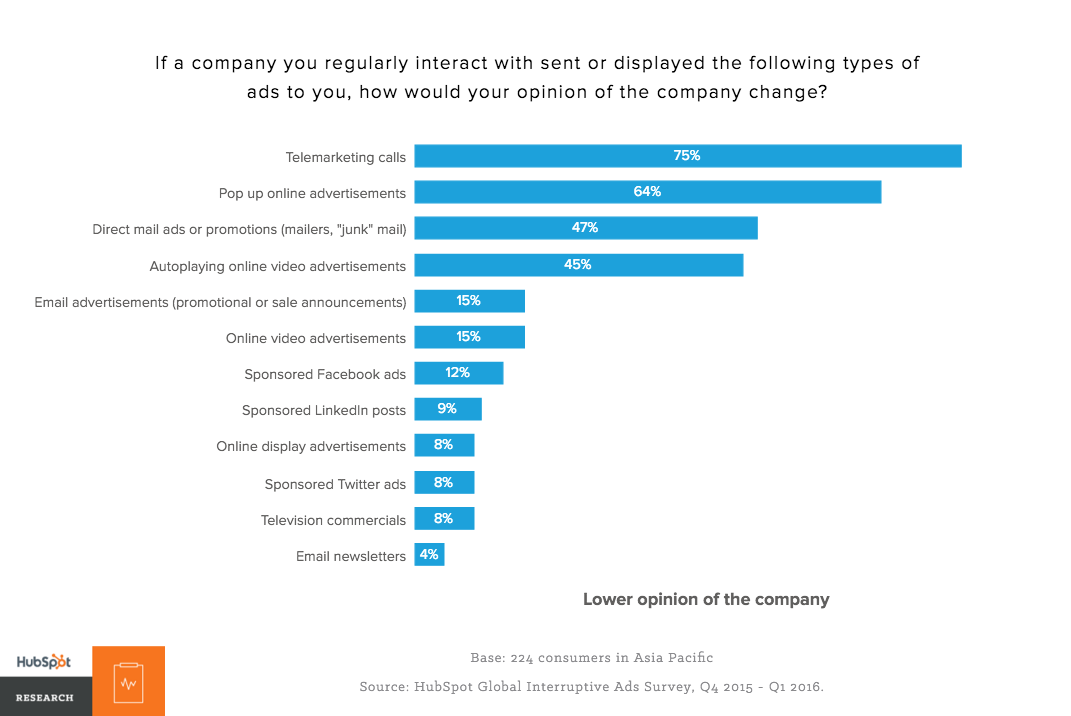



![How AI Perceptions Have Changed in the Last Decade [Comparing New & Old Consumer Data]](https://www.hubspot.com/hubfs/artificial-intelligence-is-here_3.webp)

